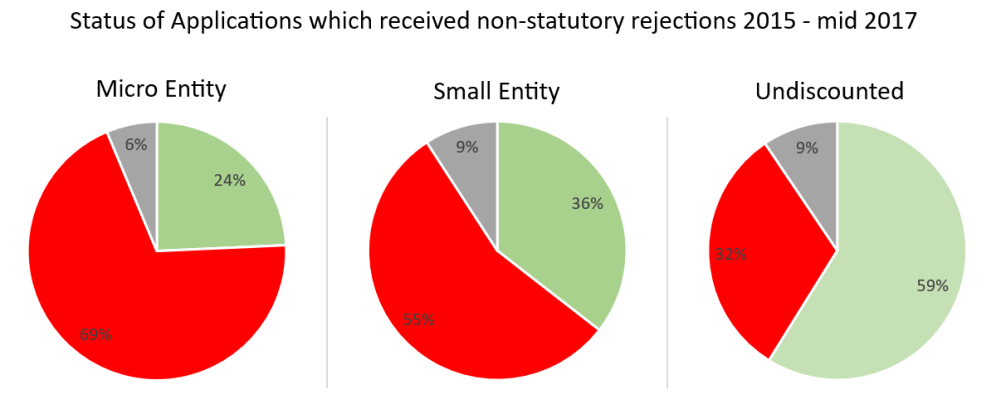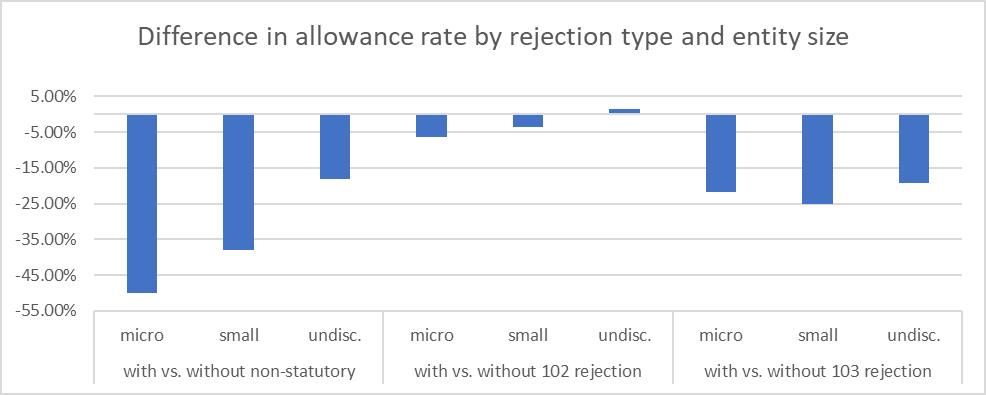6/17/2019 2:35PM UPDATE: At the bottom of this post I have now included the same analysis for 102 and 103 rejections.
With the senate hearings causing even more talk than usual about patentable subject matter (if that is even possible), this week I decided to revisit the Office Actions dataset (discussed here and here). The following chart shows the status of applications which the OA dataset shows as having received a non-statutory subject matter rejection (final or non-final) between 2015 and mid-2017 (when the dataset cuts off).

While this looks pretty bad, we have to keep in mind that micro entities have lower allowance rates overall (as discussed here). So for an apples-to-apples comparison I looked at the status of applications in the office actions dataset which did had one or more office actions but did NOT receive a 101, non-statutory rejection. Those results are shown below.

Ignoring the pending applications (raw numbers below), then a non-statutory subject matter rejection was associated with a 50% decrease in allowance rate (from 48% to 24%) for micro entities, a 38% decrease in allowance rate (from 58% to 36%) for small entities, and a 18% decrease in allowance rate (from 72% to 59%) for undiscounted entities.
a non-statutory subject matter rejection was associated with a 50% decrease in allowance rate (from 48% to 24%) for micro entities, a 38% decrease in allowance rate (from 58% to 36%) for small entities, and a 18% decrease in allowance rate (from 72% to 59%) for undiscounted entities
Again, this looks bad, but one other factor to consider is that undiscounted entities often don’t stop until they get an allowance (e.g., IBM vs. the USPTO for more discussion on this). On this minimal data alone, I can’t say who comes out worse here. Is it the micro entities that failed to procure patent protection? Or is it the undiscounted entities who probably wasted a lot of money on patents that are either too narrow to cover anything and/or that will not stand up in court unless and until some legislation passes?
What about 102 and 103 rejections?
After some reader comments, I realized it might be good to also do the same analysis for 102 and 103 rejections to further isolate whether this is a 101 issue or simply more of the same for the “haves” vs. “have-nots” in patent law.
Turns out, 102 and 103 rejections have a much more uniform impact across the three entity sizes. And so, yes, I am sticking with my conclusion (perhaps until some more critical feedback comes in) that 101 is disparately impacting smaller filers.


